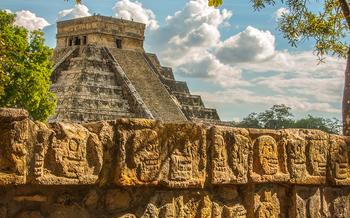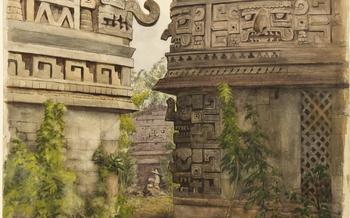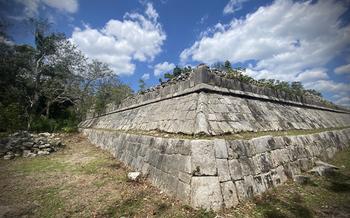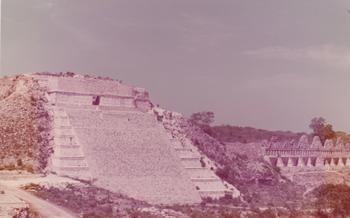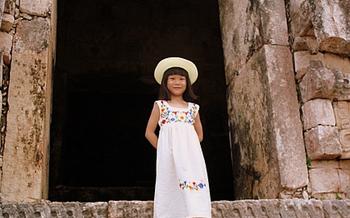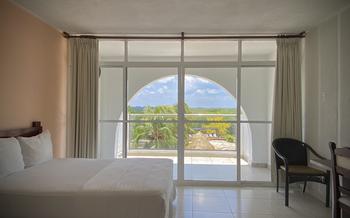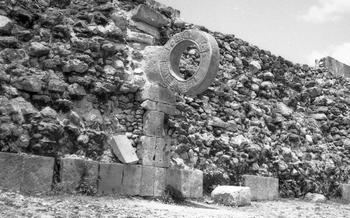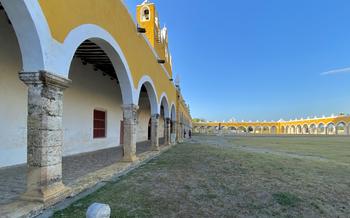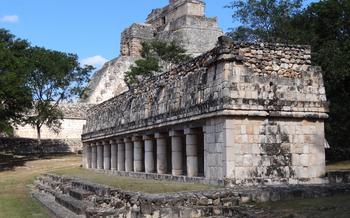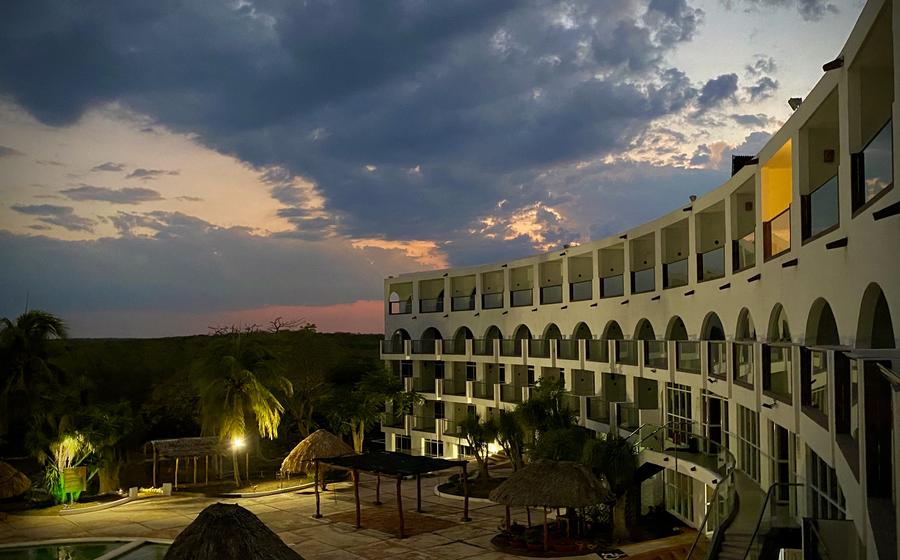
The Chocolate Route in Yucatan
- The Chocolate Route in Yucatan: A Journey of Flavors and Traditions
- A Trip to the Land of the Maya: Unveiling the City of Uxmal
- Hacienda Cacao: The Heart of the Chocolate Route
- Cacao from Bean to Bar: Witnessing the Transformation
- Chocolate Tasting: A Symphony of Flavors
- Chocolate and Culture: Unveiling the Mayan Cacao Rituals
- Chocolate Workshops: Hands-On Experience with Chocolate
- Chocolate Festivals: A Celebration of Cacao's Bounty
- Chocolate and Gastronomy: A Culinary Adventure
- Sustainable Chocolate Practices: Protecting the Environment
- Chocolate Museums: Unveiling the History of Cacao
- Chocolate Shops and Boutiques: A Sweet Souvenir
- Chocolate and Coffee: A Perfect Pairing
The Chocolate Route in Yucatan: A Journey of Flavors and Traditions
For many, chocolate is simply a sweet treat, but in the Yucatan Peninsula of Mexico, it's a way of life. The Chocolate Route is a journey that takes you through the heart of the region's chocolate-making tradition, immersing you in the flavors, aromas, and history of this beloved delicacy.
This route winds through lush landscapes and historic towns, revealing the secrets of chocolate's transformation from a humble cacao bean to a culinary masterpiece. Along the way, you'll discover the economic impact of the chocolate industry, the diverse flavors and varieties of chocolate produced in the region, and the best time to visit for the ultimate chocolate experience.
The Chocolate Route is not just a culinary adventure; it's a journey into the heart of Mexican culture. It's a celebration of tradition, sustainability, and the enduring legacy of the Maya civilization, where cacao was once considered a sacred gift from the gods.
A Trip to the Land of the Maya: Unveiling the City of Uxmal
Nestled deep within the lush rainforests of the Yucatán Peninsula, the ancient city of Uxmal awaits travelers with its captivating beauty and rich history. Once the thriving capital of the Maya kingdom, Uxmal's well-preserved ruins offer a glimpse into the advanced civilization that once called this region home.
Location and How to Get There:
Uxmal is situated approximately 62 miles south of Mérida, the capital of Yucatán. The most convenient way to reach Uxmal is by renting a car or hiring a tour guide. The drive takes about two hours and offers stunning views of the Yucatán countryside.
Main Attractions of Uxmal:
The city of Uxmal is home to a number of impressive structures, each showcasing the architectural prowess of the Maya. The Great Pyramid, also known as the Pyramid of the Magician, is the most iconic landmark of Uxmal. Standing at over 115 feet tall, this massive pyramid is a testament to the Maya's ingenuity and engineering skills.
Other notable attractions include the Nunnery Quadrangle, a complex of buildings with intricate carvings and sculptures, and the Governor's Palace, which features a series of rooms and courtyards adorned with beautiful friezes and bas-reliefs.
Uxmal's Architectural Significance:
The architecture of Uxmal is characterized by its unique and refined style, known as Puuc. This style is characterized by the use of corbelled arches, intricate geometric designs, and elaborate sculptures. The buildings in Uxmal are also notable for their excellent acoustics, which allowed the Maya to communicate effectively during ceremonies and performances.
History and Culture of the Maya Civilization:
Uxmal was founded around the 6th century AD and grew to become one of the most powerful city-states in the Maya region. The city reached its peak during the Late Classic period (800-1000 AD) and was home to over 20,000 inhabitants.
The Maya civilization was one of the most advanced pre-Columbian civilizations in the Americas. The Maya were skilled in mathematics, astronomy, and engineering, and they developed a complex system of writing and hieroglyphics. The city's strategic location allowed the Maya to control a vast network of trade routes, which brought wealth and prosperity to Uxmal.
Hacienda Cacao: The Heart of the Chocolate Route
Deep in the heart of the Yucatan Peninsula lies Hacienda Cacao, a sprawling plantation and chocolate factory that serves as the epicenter of the region's chocolate-making tradition. Founded in the 19th century by a Swiss immigrant with a passion for chocolate, Hacienda Cacao has been producing some of the finest chocolate in Mexico for over a century.
Visitors to the hacienda are greeted by lush cacao groves, where rows of cacao trees stretch out as far as the eye can see. The air is thick with the sweet, heady aroma of ripe cacao pods, promising a journey into the world of chocolate. Guided tours of the plantation offer a glimpse into the intricate process of growing, harvesting, and processing cacao beans, from the planting of the trees to the fermentation, drying, and roasting of the beans.
At the heart of the hacienda lies the chocolate factory, where the magic of transformation takes place. Here, visitors can witness the skilled hands of chocolatiers as they meticulously sort, roast, and grind the cacao beans, releasing their rich, complex flavors. The resulting chocolate liquor is then conched, a process of continuous mixing and kneading that develops the chocolate's smooth, velvety texture.
Cacao from Bean to Bar: Witnessing the Transformation
The journey from cacao bean to chocolate bar is a meticulous and fascinating process that unfolds in several stages. After harvesting and selecting the ripest cacao pods, the beans are extracted and undergo a crucial step known as fermentation. This process, lasting several days, allows the beans to develop complex flavors and aromas through the action of natural yeasts and bacteria.
Once fermentation is complete, the beans are dried under the sun or in mechanical dryers to reduce their moisture content. This step is essential for preserving the beans and preparing them for roasting. The roasting process brings out the rich flavors and aromas inherent in the cacao beans. Roasting temperatures and durations vary depending on the desired flavor profile, with lighter roasts producing a more delicate flavor and darker roasts delivering a bolder, more intense chocolate experience.
After roasting, the beans are cracked and winnowed to separate the nibs from the shells. The nibs, which contain the cocoa solids and cocoa butter, are then ground into a fine paste known as chocolate liquor. This liquor can be further processed to create various chocolate products, including cocoa powder and chocolate bars.
To create chocolate bars, the chocolate liquor is mixed with cocoa butter, sugar, and sometimes other ingredients like vanilla or nuts. This mixture is then conched, a process that involves continuous mixing and kneading to develop a smooth, velvety texture. The conching time can range from several hours to several days, depending on the desired result.
Finally, the chocolate is tempered, a crucial step that stabilizes the cocoa butter crystals and ensures the chocolate has a glossy finish, a firm snap, and a long shelf life. Tempering involves heating and cooling the chocolate in a controlled manner to achieve the desired crystallization. The tempered chocolate is then poured into molds, cooled, and packaged, ready to be enjoyed by chocolate enthusiasts worldwide.
Chocolate Tasting: A Symphony of Flavors
Chocolate tasting is an art that allows you to unravel the intricate nuances and flavors hidden within each piece. Begin by observing the chocolate's color, texture, and aroma. Dark chocolate typically has a deep, rich color, while milk chocolate is lighter and creamier. The texture should be smooth and velvety, without any graininess. As you take a bite, let the chocolate melt slowly in your mouth, allowing the flavors to fully develop.
Pay attention to the initial taste, which may be bitter, sweet, or sour. As the chocolate continues to melt, secondary and tertiary notes will emerge, revealing a complex symphony of flavors. Common flavor profiles include fruity, nutty, caramel, and floral notes. The finish of the chocolate, or the lingering aftertaste, should be pleasant and harmonious.
To enhance your tasting experience, pair your chocolate with different flavor profiles. Salty foods, such as pretzels or nuts, can balance the sweetness of chocolate. Fruity accompaniments, like berries or citrus, can add a refreshing contrast. Spicy flavors, such as chili or cinnamon, can bring out the chocolate's complexity. Experiment with various pairings to discover your favorite combinations.
Chocolate tasting is a multisensory experience that engages your sight, smell, taste, and touch. Take your time, savor each bite, and allow yourself to be transported to a world of pure chocolate bliss.
Chocolate and Culture: Unveiling the Mayan Cacao Rituals
In the heart of the Mayan civilization, cacao held a sacred and significant place. The Mayans revered cacao as a divine gift, believing it to be a symbol of life, fertility, and abundance. For them, chocolate was not merely a beverage or a treat; it was a sacred substance used in religious ceremonies, healing rituals, and as a form of currency.
The Mayans developed intricate rituals and traditions surrounding the cultivation, preparation, and consumption of chocolate. They believed that cacao beans were a gift from the gods, and they treated them with the utmost respect. The harvesting and processing of cacao were accompanied by prayers, offerings, and special ceremonies to ensure a bountiful harvest and to honor the divine powers associated with cacao.
Cacao was also a central part of Mayan mythology. The Mayans believed that cacao was created by the gods as a gift to humanity. They associated cacao with the god of rain and fertility, Chaac, and the goddess of love and beauty, Ix Chel. Cacao was often used in offerings to these deities, and it was believed to bring blessings, good fortune, and happiness.
Chocolate Workshops: Hands-On Experience with Chocolate
Immerse yourself in the art of chocolate-making by participating in a hands-on chocolate workshop. Learn the secrets of crafting your own chocolate from scratch, starting with selecting the finest cacao beans. Discover the techniques of tempering and molding chocolate to create unique shapes and designs. Experiment with different flavors and fillings to create your own signature chocolate bars. Attend a chocolate workshop and let your creativity and passion for chocolate shine through.
Chocolate Festivals: A Celebration of Cacao's Bounty
The Yucatán Peninsula is renowned for its vibrant festivals, and chocolate is no exception. Each year, the region hosts several chocolate festivals that celebrate the region's rich cacao heritage and showcase the diverse and innovative ways chocolate is incorporated into local cuisine and culture. These festivals attract chocolate enthusiasts, tourists, and locals alike, offering a unique opportunity to sample a wide variety of chocolate creations and immerse themselves in the region's chocolate culture.
One of the most popular chocolate festivals is the International Chocolate Festival held in Mérida, the capital of Yucatán. This festival features over 100 exhibitors from around the world, showcasing their finest chocolate creations, from traditional Mayan chocolate drinks to modern culinary innovations. Visitors can indulge in chocolate tastings, attend workshops and demonstrations, and learn about the history and significance of cacao in Mayan culture.
Another notable chocolate festival is the Chocolate Festival of Valladolid, a charming colonial city in the heart of the Yucatán Peninsula. This festival highlights the region's traditional chocolate-making techniques, showcasing local chocolate makers and their unique creations. Visitors can participate in chocolate-making workshops, savor traditional chocolate dishes, and enjoy live music and cultural performances.
These chocolate festivals are a testament to the region's deep-rooted connection to cacao and its continued role in shaping the local culture and economy. Whether you are a chocolate aficionado or simply looking for a unique and delicious experience, these festivals offer an unforgettable journey into the world of chocolate.
Chocolate and Gastronomy: A Culinary Adventure
The Chocolate Route in Yucatan not only offers a journey through the history and culture of chocolate but also invites you to embark on a culinary adventure. Chocolate, with its rich and versatile flavor, transcends the boundaries of dessert and seamlessly integrates into both savory and sweet dishes.
In the Yucatan Peninsula, you'll find a fusion of traditional Mayan cuisine with contemporary culinary techniques, resulting in innovative chocolate-infused creations. From traditional cochinita pibil (slow-roasted pork) enhanced with a hint of chocolate to modern takes on Mayan dishes like chocolate-infused mole and kakaw (a spicy chocolate drink), the region offers a tantalizing array of culinary delights.
Beyond traditional Yucatecan dishes, you can explore unique and contemporary chocolate-based recipes at the many restaurants and cafes along the Chocolate Route. Experiment with savory dishes such as chocolate-rubbed grilled meats, chocolate-infused pasta sauces, and chocolate-spiced roasted vegetables. For a sweet treat, indulge in chocolate-filled pastries, chocolate-dipped fruits, and decadent chocolate desserts.
The Chocolate Route in Yucatan provides a culinary adventure that celebrates the versatility and boundless creativity of chocolate. Whether you prefer traditional or contemporary cuisine, there's something to satisfy every palate and create lasting culinary memories.
Sustainable Chocolate Practices: Protecting the Environment
The Chocolate Route in Yucatan is committed to sustainable practices that protect the environment and support local communities. Cacao farmers employ sustainable farming methods to preserve the ecosystem, conserve water resources, and promote biodiversity. They use organic fertilizers and pest control techniques, reducing the impact on the environment.
Fair trade and ethical sourcing are essential aspects of the route. Cacao farmers receive fair prices for their beans, ensuring a stable income and improving their livelihoods. This encourages sustainable farming practices and supports the local economy.
Certifications and standards, such as UTZ Certified and Fairtrade, provide assurance that the chocolate is produced according to sustainable criteria. These certifications verify that farmers adhere to environmental and social standards, including fair wages, safe working conditions, and respect for human rights.
Supporting local communities and preserving biodiversity are integral to the sustainability efforts. The route works closely with local communities to empower them and promote economic development. By purchasing chocolate from the region, you contribute to the preservation of the Mayan culture, the rainforest ecosystem, and the livelihoods of local farmers.
Chocolate Museums: Unveiling the History of Cacao
Immerse yourself in the rich heritage of chocolate at specialized museums dedicated to preserving and showcasing its history. These museums offer a fascinating journey through the origins, cultivation, and processing of cacao, using interactive displays and educational programs to engage visitors of all ages. Learn about the significance of chocolate in various cultures, explore the ancient Mayan traditions surrounding cacao, and discover the evolution of chocolate-making techniques over time. These museums not only provide a wealth of information but also offer a unique and interactive experience that will leave you with a deeper appreciation for the world of chocolate.
Chocolate Shops and Boutiques: A Sweet Souvenir
Scattered throughout the region, one can find a treasure trove of chocolate shops and boutiques, each offering a unique and enticing selection of chocolate delights. From artisanal chocolate makers to specialty shops, these establishments are a haven for chocolate enthusiasts seeking to indulge their sweet tooth and take home a taste of the Chocolate Route. Whether you're looking for traditional Mayan-style chocolate, infused with local spices and flavors, or innovative creations that push the boundaries of taste, you're sure to find something to satisfy your cravings.
ChocoMuseo in Valladolid is a must-visit for any chocolate lover, offering a comprehensive collection of chocolates from across the region, as well as workshops and demonstrations on the chocolate-making process. La Chocolatería de Hacienda Chichen in Chichén Itzá is another popular destination, showcasing a variety of Mayan-inspired chocolates, including the unique "Mayan Gold" chocolate.
For those seeking a truly unique experience, a visit to the small village of Ek Balam is a must. Here, you can find local artisans crafting chocolate using traditional techniques, passed down through generations. The village is home to several small chocolate shops, where you can witness the entire process, from bean to bar, and sample the delicious results.
Whether you're looking for a sweet treat to enjoy on the spot or a special gift to take home, the chocolate shops and boutiques of the Chocolate Route are sure to satisfy your cravings and provide a lasting reminder of your travels in this enchanting land of chocolate.
Chocolate and Coffee: A Perfect Pairing
The Chocolate Route in Yucatan not only offers a journey through the world of chocolate but also a chance to delve into the rich coffee culture of the region. Many local coffee shops and cafes proudly serve freshly brewed coffee, providing the perfect complement to the exquisite chocolate flavors.
Indulge in a leisurely coffee break at one of these charming establishments, immersing yourself in the local ambiance while savoring the harmonious blend of chocolate and coffee. Experiment with different coffee varieties, each offering unique notes and aromas that enhance the chocolate's complexity.
From aromatic espressos to smooth lattes, the possibilities are endless. Whether you prefer a classic pairing or a more adventurous combination, the fusion of chocolate and coffee promises a delectable experience that will tantalize your taste buds.
